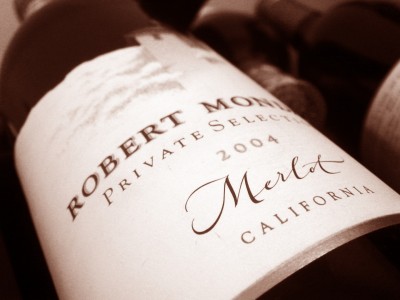
The Modern Butlers’ Journal volume 9, issue 4
International Institute of Modern Butlers
 Message from the Chairman
Message from the Chairman
Some idle musings this month while taking a break from training some rather encouragingly-enthusiastic butlers in the Middle East….
“I have heard of chimpanzees eating at the table and then, of course, the real question becomes not so much in what order does the service take place, but should they be allowed to remain while port & cigars are passed?” So questioned a butler eight years ago about a prospective job he was being offered in Miami, in which one of the family members to be serviced was exactly that, a chimpanzee. All in a day’s work, perhaps, but illustrating the occasional indignity butlers are required to endure in a profession that prides itself on its dignity. And in so doing, displaying that other great butler trait: aplomb or sangfroid, two excellent French words that describe the better butler.
Talking of which, a private service butler I was training in Florida recently coined a new term I believe worthy of being admitted into our lexicon: “to butlerize”—meaning to put the stamp or imprimatur of the butler, as represented by the standards of the butler, onto a project, action, or product. If you like the term, please do use it—I believe it will help promote the benefits of the profession.
Letters to the Editor
“The studies definitely have benefited all my other activities. I seem to be as productive as ever, with the additional advantage of a service philosophy, more and better people skills, as well as domestic skills that are surprisingly helpful, often in surprising circumstances. This course and your mentoring have been some of my most valuable education and training. I am only sorry that I did not receive such training when I was in my early 20s: What a difference it would have made in my life and career. Yes, I have a wonderful life, and my career has been successful; but I can look back, with hind sight, seeing remarkable benefits that might have been realized had I simply had the skills of a proper English butler. Not a day passes now that I do not use my training.”
Received from a Private Service Butler Correspondence Course student
Butlers in the Media
Finally, an accurate portrayal of the job market for butlers today—a well-researched piece.
Interesting article about the butler in the Virginia Governor’s mansion who has been providing service there successfully for the past 29 years.
For those wondering how much progress is being made in replacing real butlers by robot butlers, a new milestone has been reached: a prestigious university in the US has managed to create a robot that can separate Oreo cookies into their component parts—not generally part of a butler’s job description, but hey, let’s not nitpick—and who also speaks with a “synthetic British accent.” Added to earlier advances by universities elsewhere over the last 15 years, robotic butlers can also now crack open an egg and butter toast. It seems humanoid chefs should also be concerned about their prospects.
And for comedy buffs, Stephen Fry, oft appearing as a butler in movies and TV series, is lined up to be the butler in a spoof on Batman and Alfred, his butler.
Placement
Any hotel butlers interested in a supervisory position at a resort being opened this summer in the Maldives by a prestigious Luxury House, can apply by sending their resume to the Institute.
 Let’s Talk about Wine, Part XIII
Let’s Talk about Wine, Part XIII
by Amer Vargas
Today we travel to California, not only to take advantage of its beautiful weather, but also to enjoy the best US wines of all times.
Wine production in California started in the eighteenth century, when Spanish missionaries planted the first vineyards—in order to have wine for Mass—using vines they brought from Spain and cuttings imported from other missions in Mexico.
The Gold Rush during the mid-nineteenth century increased both population and the demand for wine, hence the appearance of hundreds of new wineries that produced well until the philloxera epidemic struck later that century, destroying the vast majority of vineyards and sending most minor producers out of business.
But the ability to graft traditional (and healthy) vineyard cuttings with philloxera-resistant American rootstocks revived the craft and began a new era of great US wines, that is, until the enactment of the 18th amendment in 1919: the prohibition of alcohol. Only a lucky few wineries were granted the right to continue producing wine for Mass (an exception to the Prohibition); others redirected their business to grape juice production, while many others disappeared.
By the time the Prohibition was finally repealed in 1933, the Californian wine world had been mostly destroyed and it took more than three decades to recover.

But then, in 1976, several Californian wineries were invited to a blind tasting event in Paris to compare their wines with some of the best Bordeaux and Burgundy contemporary wines. This event, known as The Judgment of Paris, stunned the wine world: Californian wines swept the contest in both white and red categories! Since then, the expectations regarding Californian wines have changed worldwide and have made California the world’s fourth-largest producer, after France, Italy, and Spain.
Lying along the West Coast of America, California enjoys the benefits of the humidity and breezes from the Pacific Ocean. There are six different wine regions: North Coast, Central Coast and Southern California, all lying along the coastline, whilst Far North California, Inland Valleys, and Sierra Foothills are situated further inland. They all share the Mediterranean (mild-Continental) climate, with long growing seasons and mild average temperatures that favor all stages of wine production. What differentiates Californian wines is the result of their soils, which can be rich in sand, clay, loam and granite. All these soils allow vineyards to grow strong and healthy, while giving different hints of flavors to the final wine.
Among the more-than-a-hundred grape varieties grown in California, the most produced are Merlot, Cabernet Sauvignon, Pinot Noir, Syrah, and Zinfandel for red varietals, and Chardonnay and Sauvignon Blanc for whites.
The warm weather permits the growth and harvesting of very ripe berries and the creation of fruit-dominant and simple flavored wines. The use of oak barrels for aging is quite common in California. It is also common to find most of the California wines to be full-bodied.

As a consequence, Californian wines call for matching with very rich foods: Chardonnays are recommended with white fish, shellfish and chicken when accompanied by creamy and buttery sauces; Sauvignon Blanc goes excellently with grilled vegetables and many white fish cooked with garlic-based sauces. The Californian Merlot—the most reputable and popular varietal wine in the country—matches to perfection with sautéed duck breast and pork tenderloin, including any sauces they may come with; as for Cabernet Sauvignons, the grapes that put California on the wine map during that 1976 Judgement of Paris, one must try them combined with any kind of beef, no matter how it has been prepared.
I raise my glass of Napa Valley Merlot, to my dream of visiting those sunny California foothills in the near future. Salud!
Removing Coffee & Tea Stains from Silverware
by Jeffrey Hermann
If you can manually clean the inside of a coffeepot or teapot, use a cellulose sponge (if the pot opening is big enough) or make a swab by wrapping a sponge on the end of a wooden dowel. Moisten the sponge and apply a liberal amount of Wright’s Silver Cream, then wipe away the stain and rinse the pot thoroughly with warm water. Wright’s is an excellent cleaner for this task because it’s much less abrasive than commercial cleaners that are not meant specifically for silver. Don’t use powdered abrasive cleaners, as they will impart fine scratches which will attract more dirt. Don’t use steel wool (too abrasive and rust may result on the bottom), Scotch-Brite or scouring pads (too abrasive), or dips (too toxic — see Chemical Dips). A cotton swab with a small amount of Wright’s will remove stains within the spout opening. Rinse well with warm water.
If you can’t adequately clean the interior manually, fill the pot with warm water and drop in one five-minute denture cleaning tablet (about five cents each) per two cups of water. Let stand for ten minutes, empty, then rinse with warm water. You may find that the effervescing action of the tablets just breaks the contact between the stain and the silver and not lift the residue. If this occurs, use a wet brush to remove the loosened residue and rinse with warm water.
Visit Mr. Herman’s website for more silver cleaning and maintenance tips: www.hermansilver.com
Please subscribe
at the top right of this page
to continue to receive these newsletters.
Follow us on Facebook & Twitter
The Institute is dedicated to raising service standards by broadly disseminating the mindset and skills of that time-honored, quintessential service provider, the British Butler, adapted to the needs of modern employers and guests in staffed homes, luxury hotels, resort, spas, retirement communities, jets, yachts, & cruise ships around the world.






